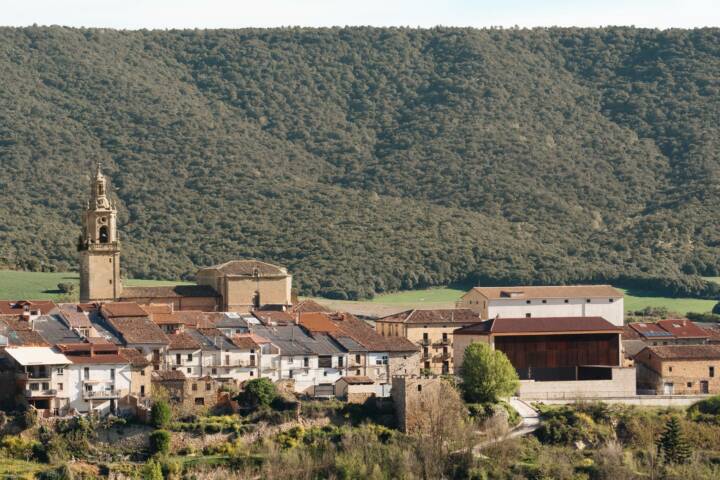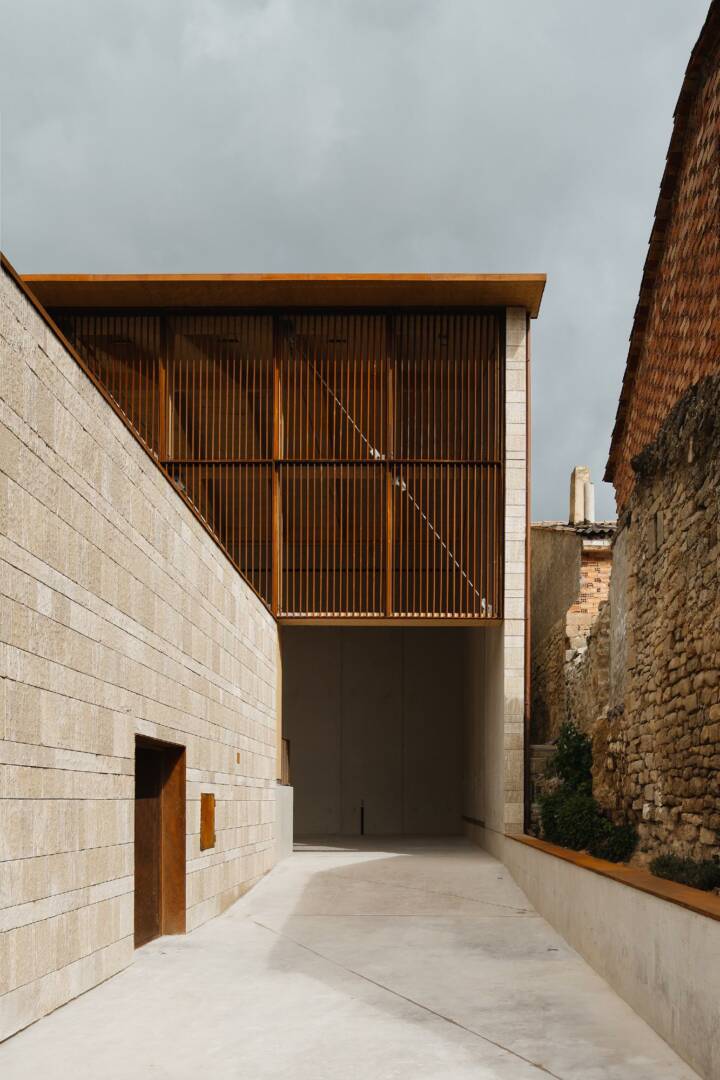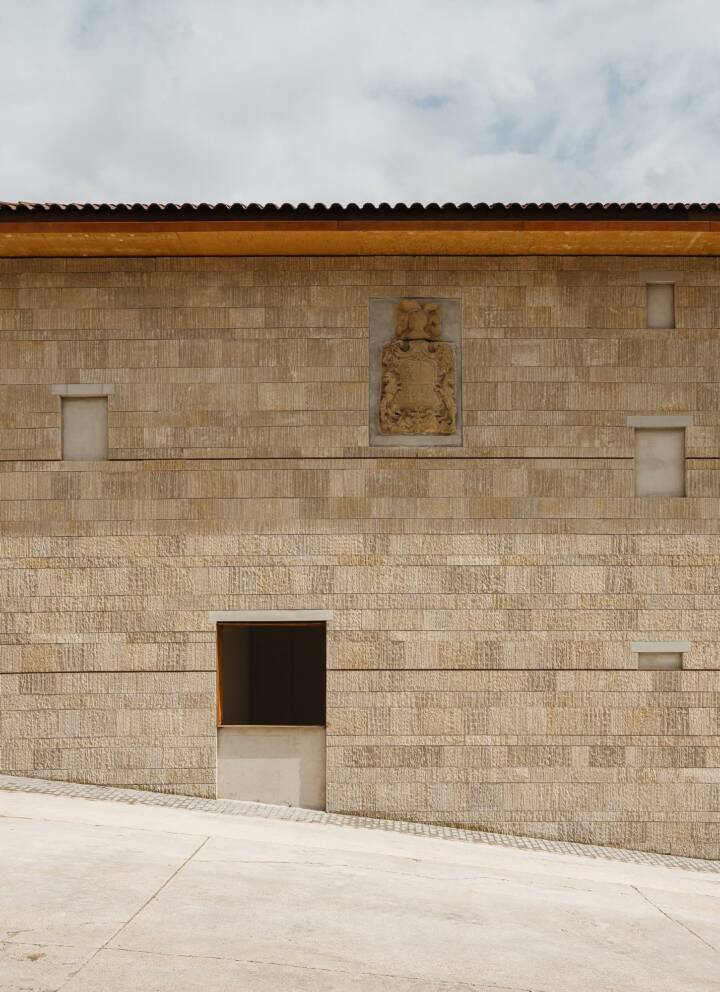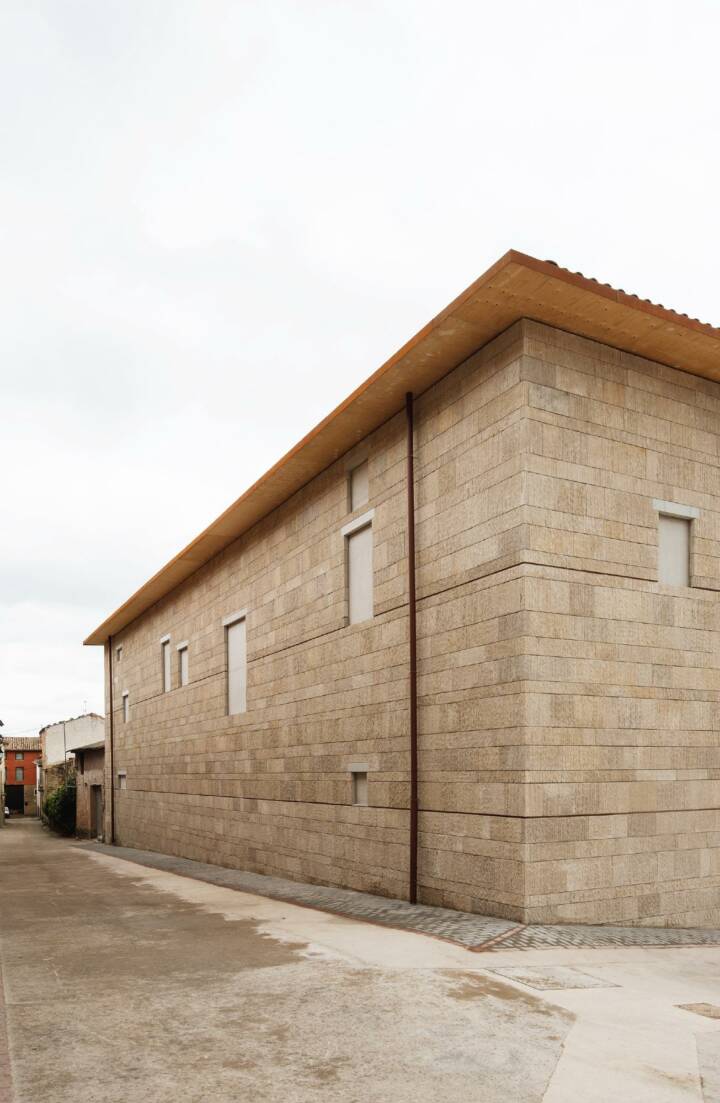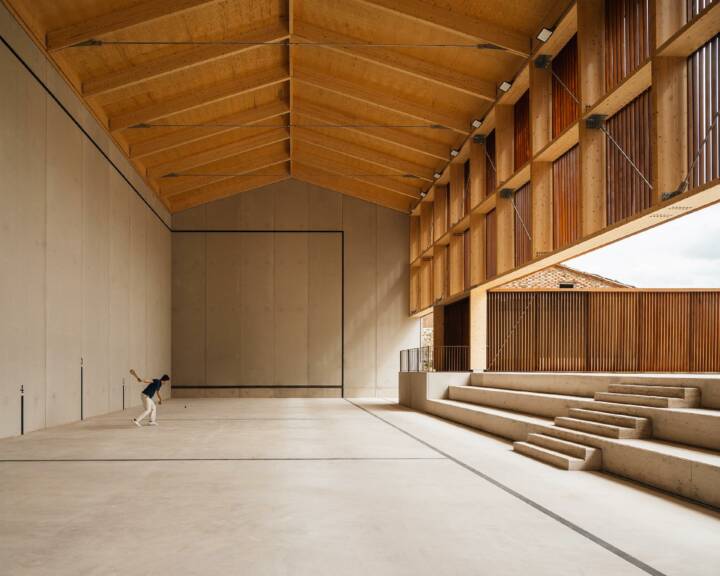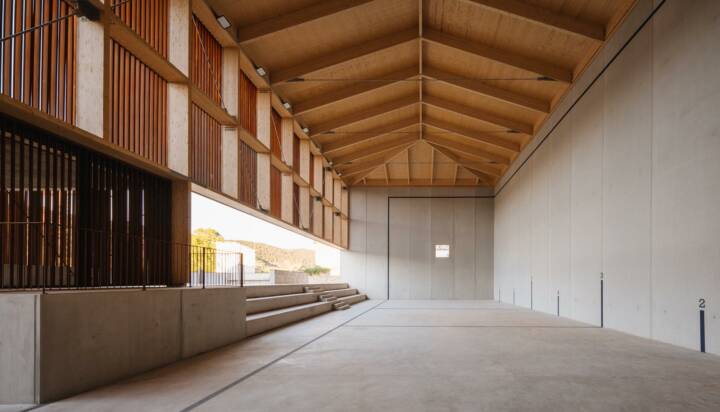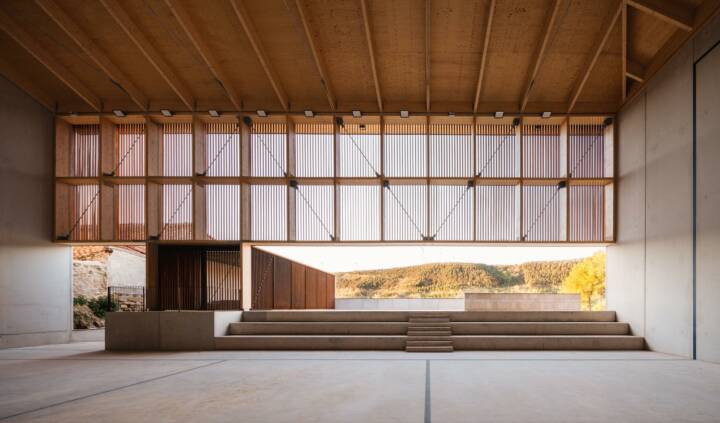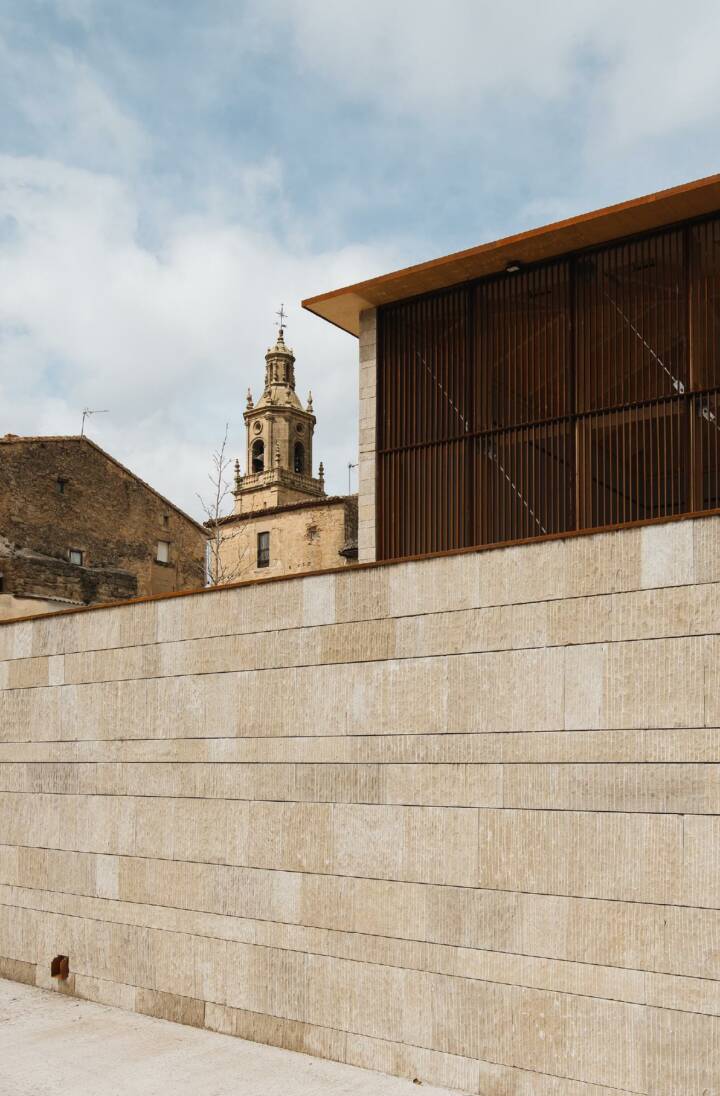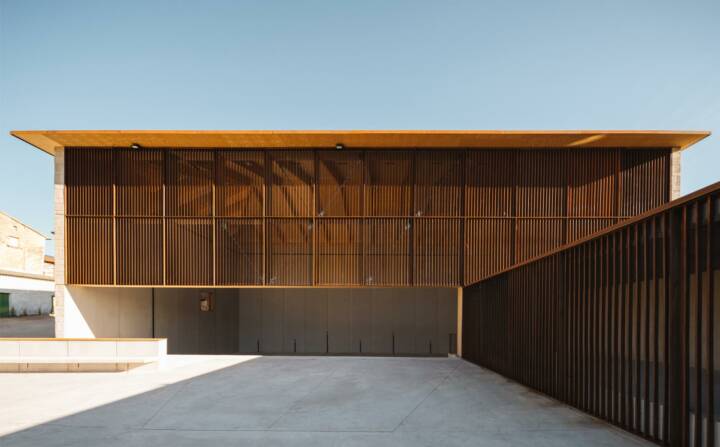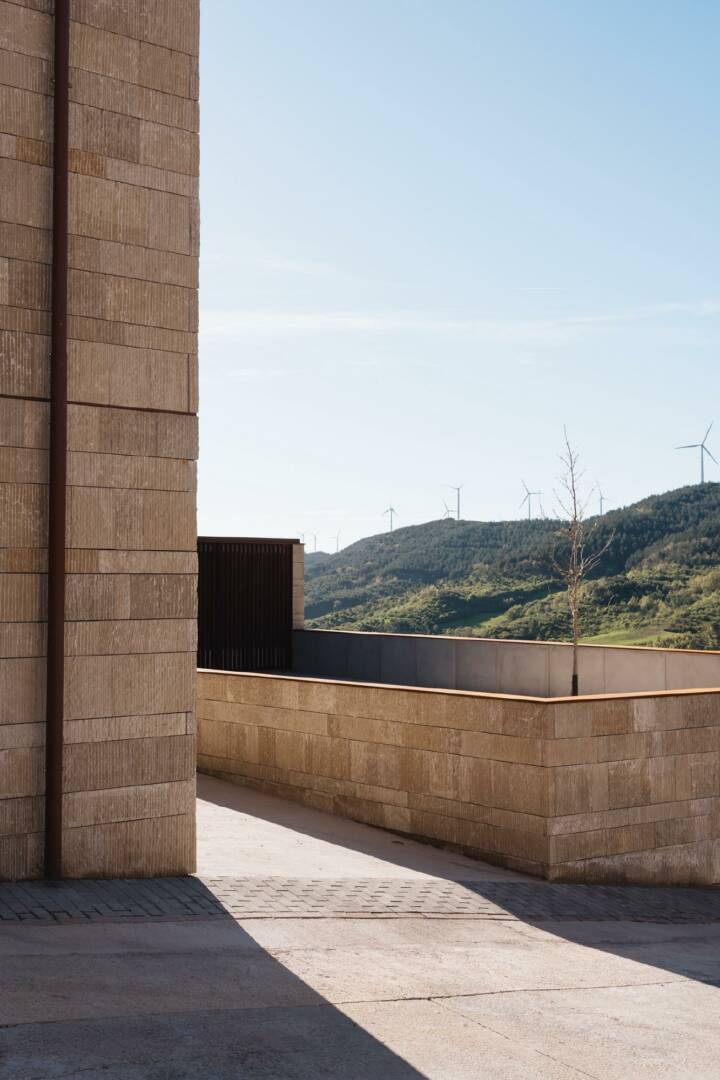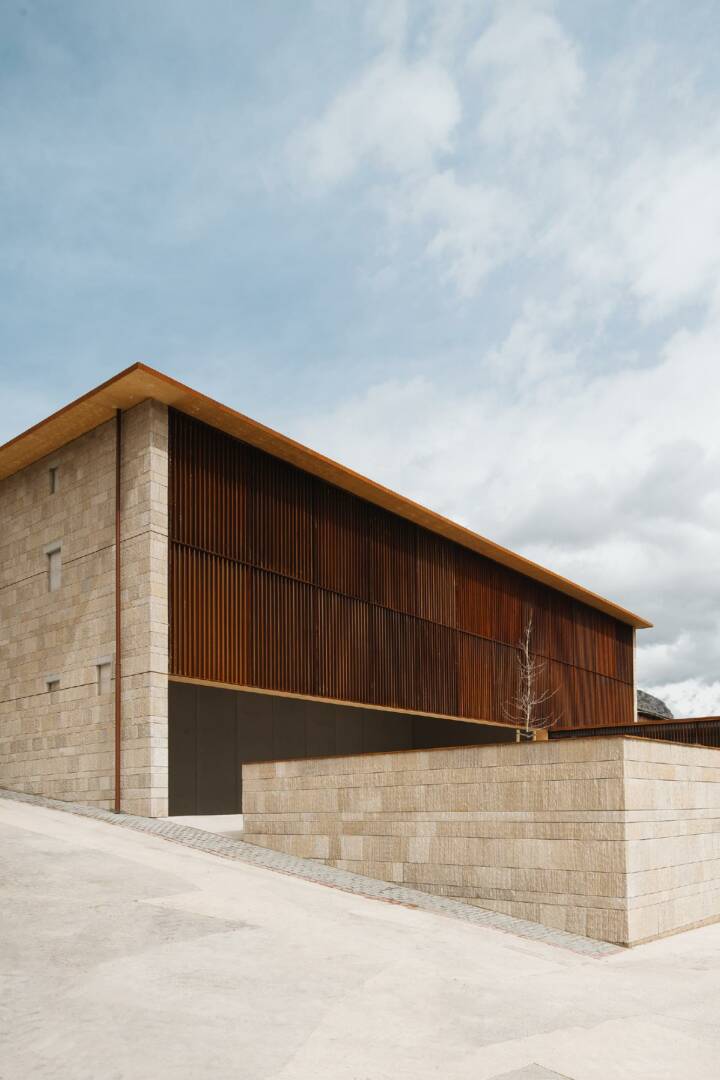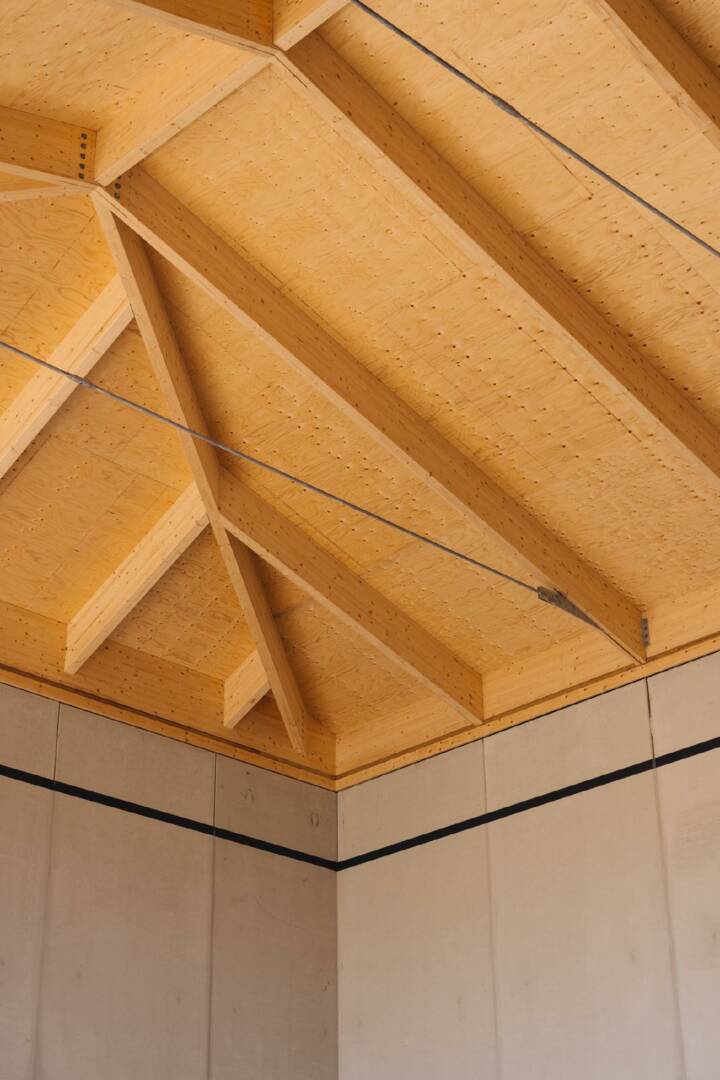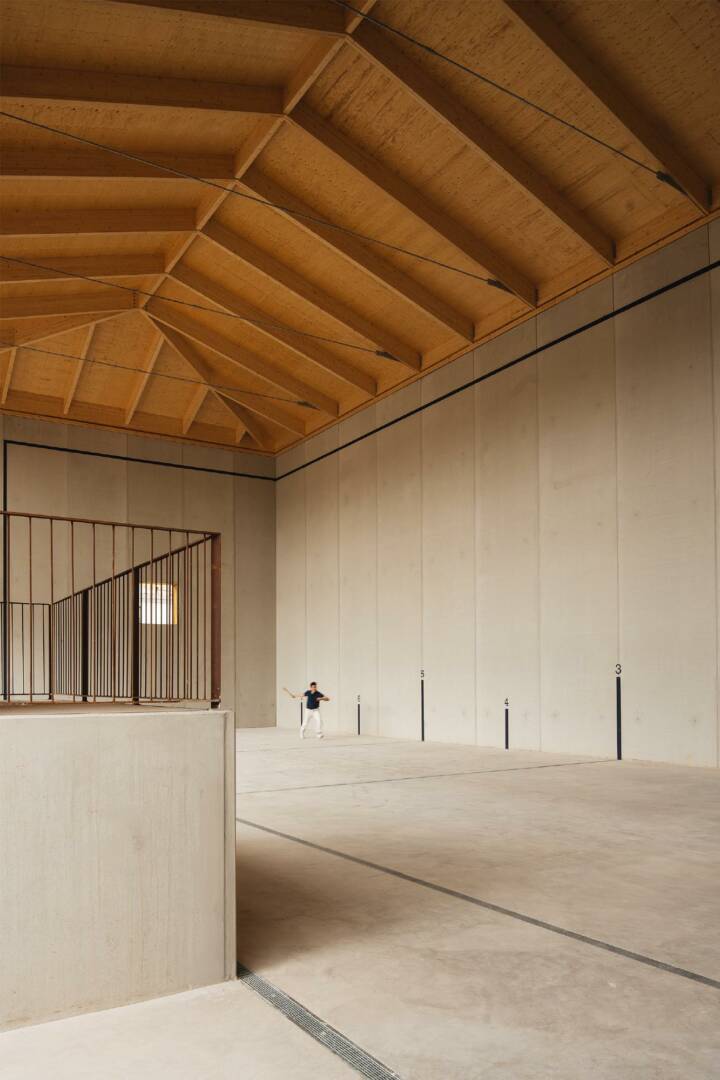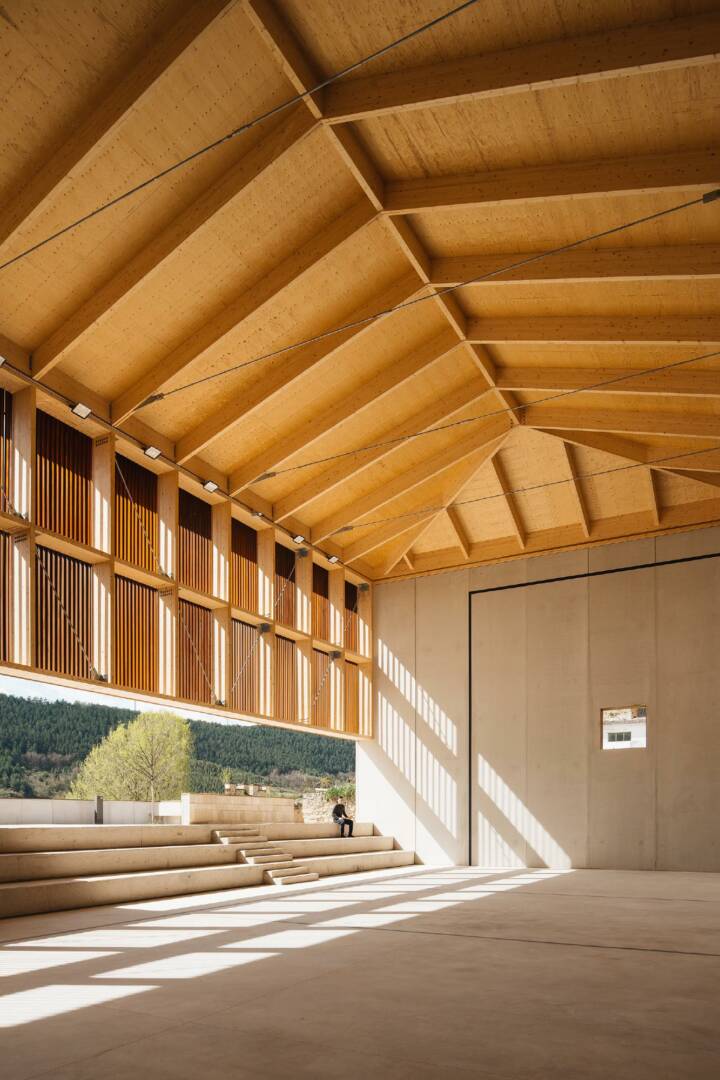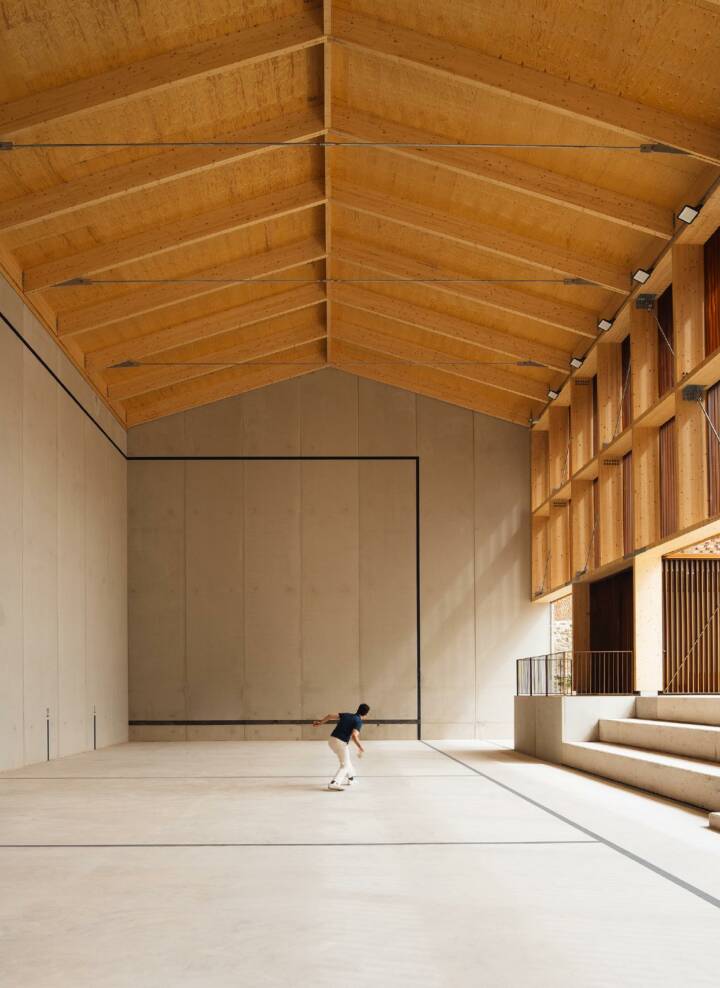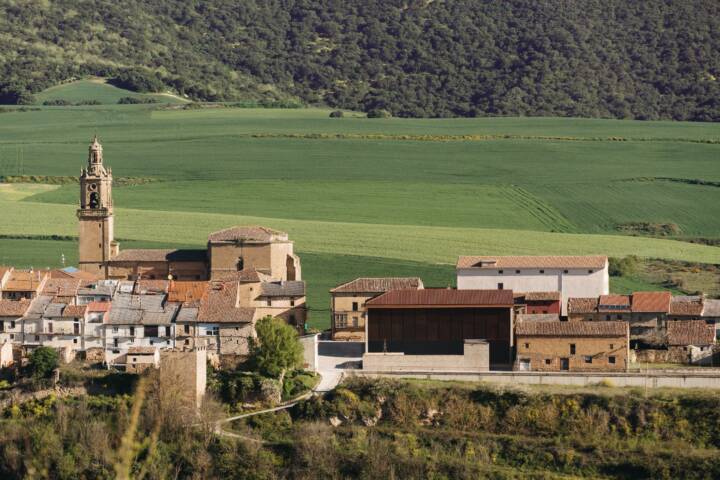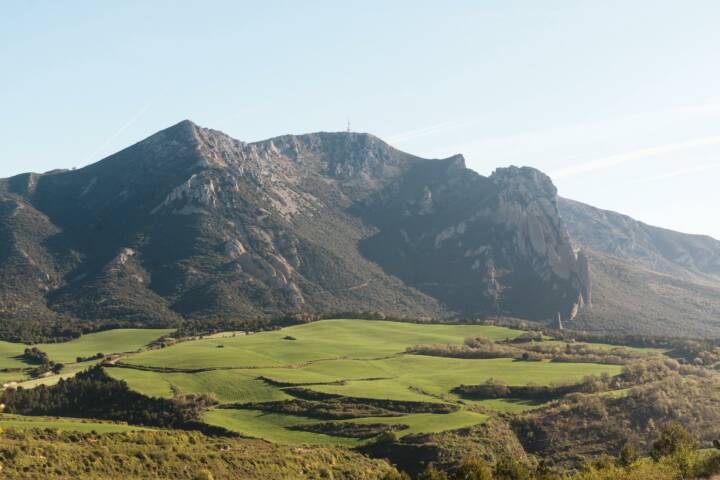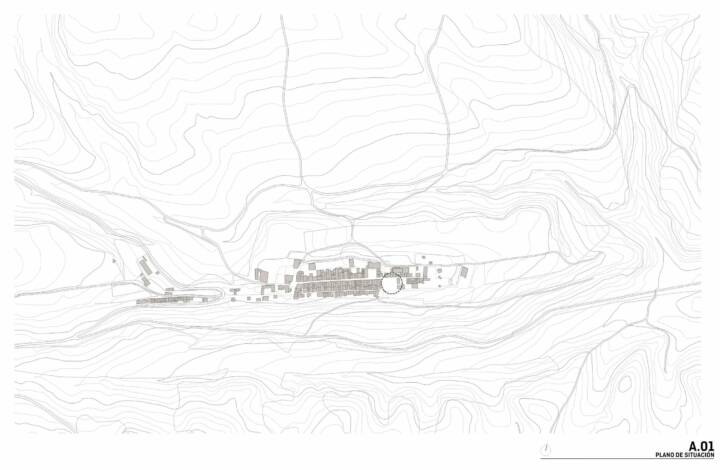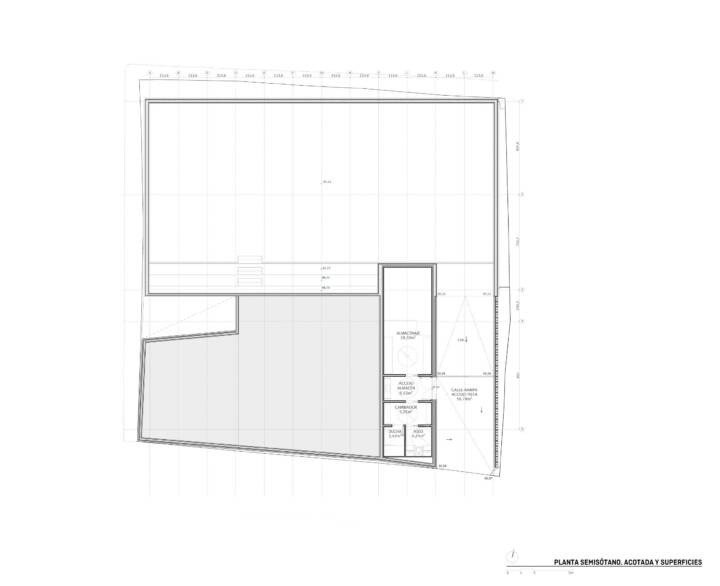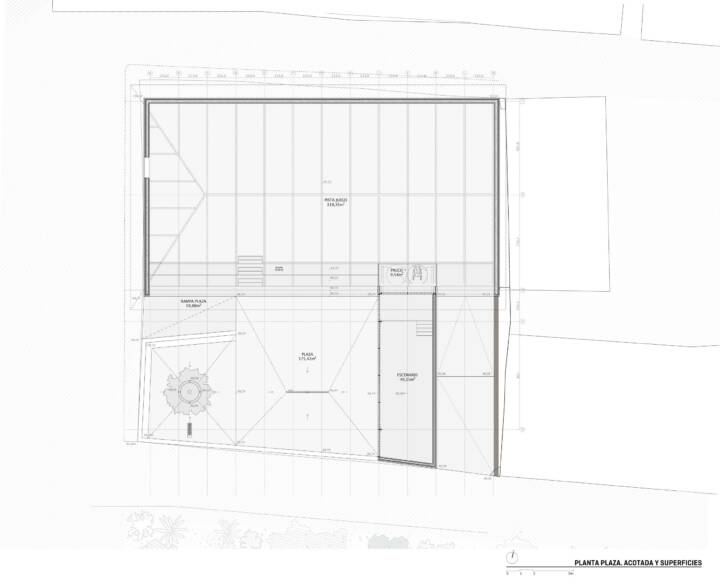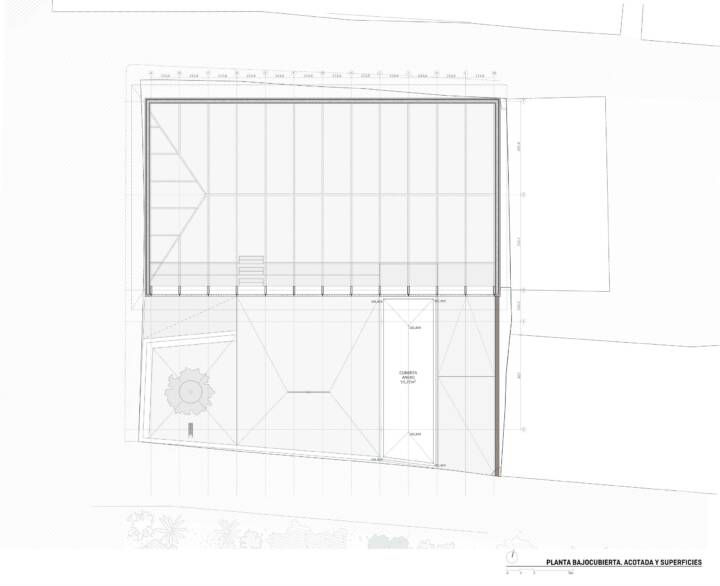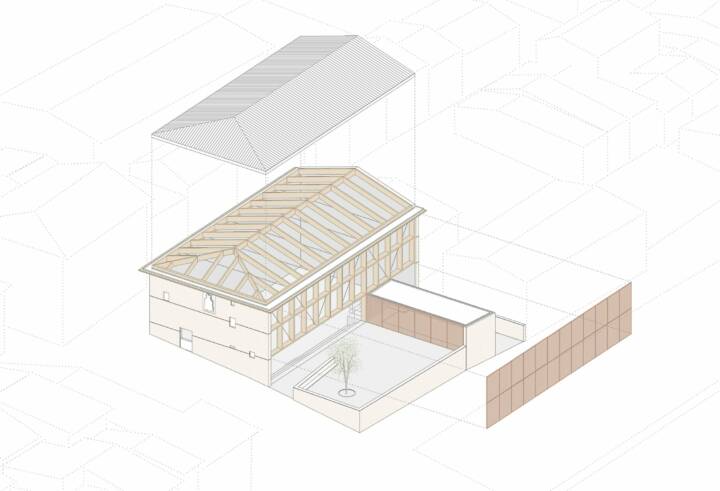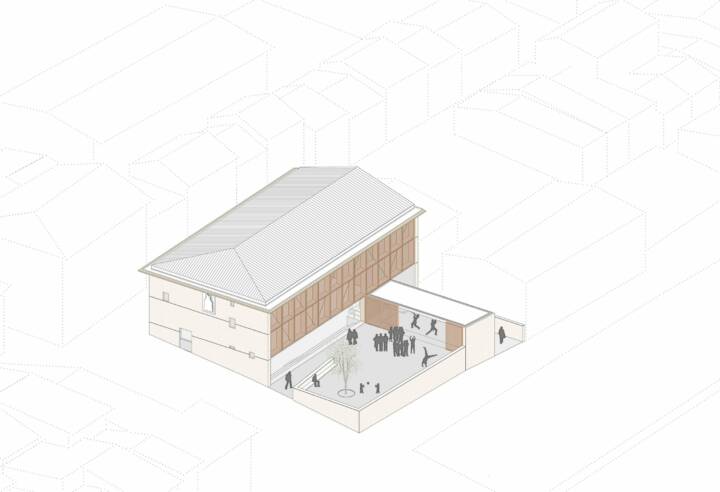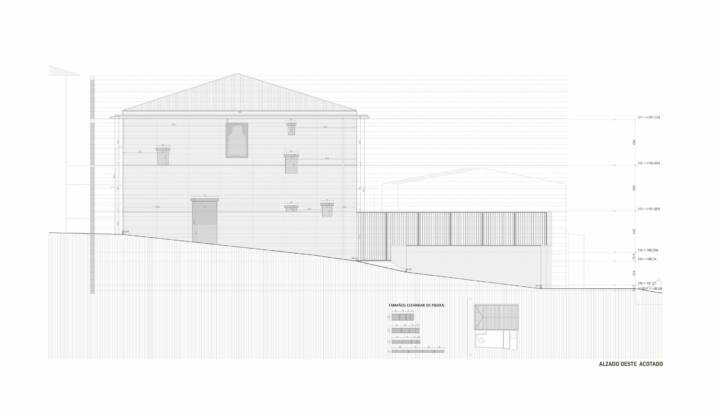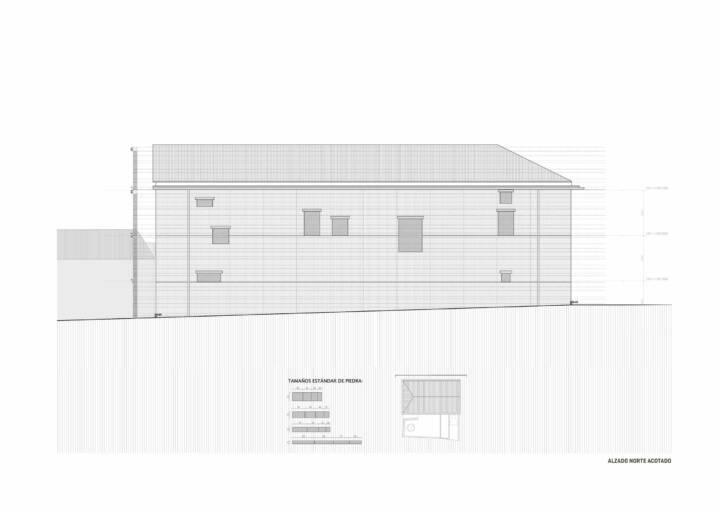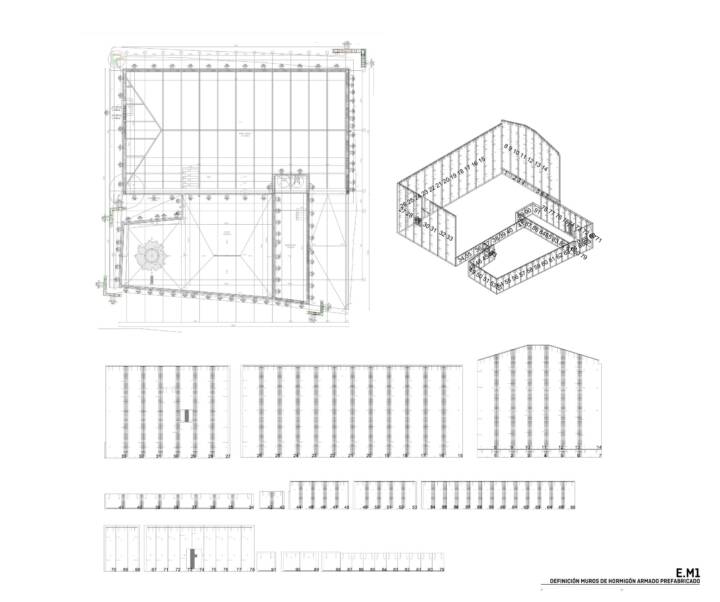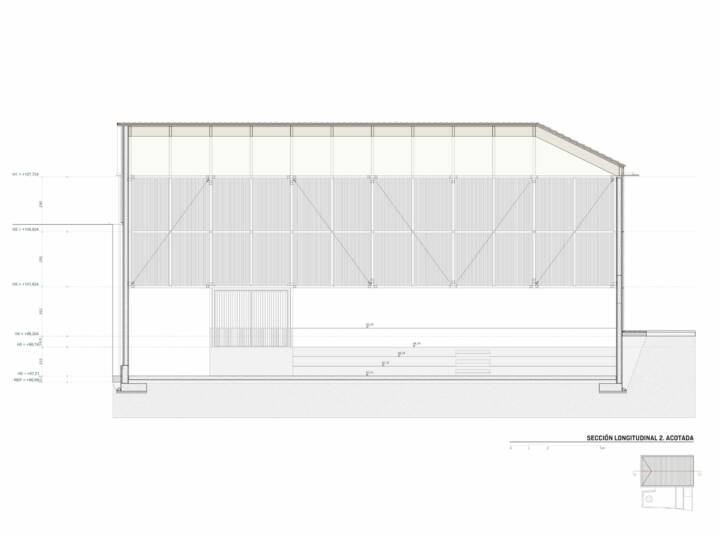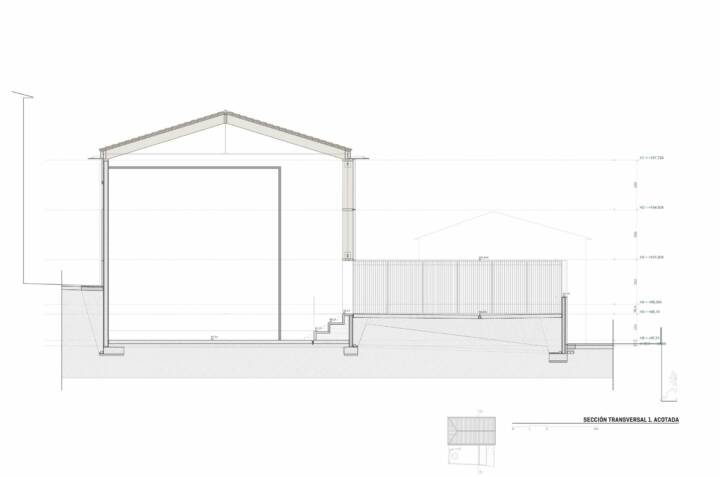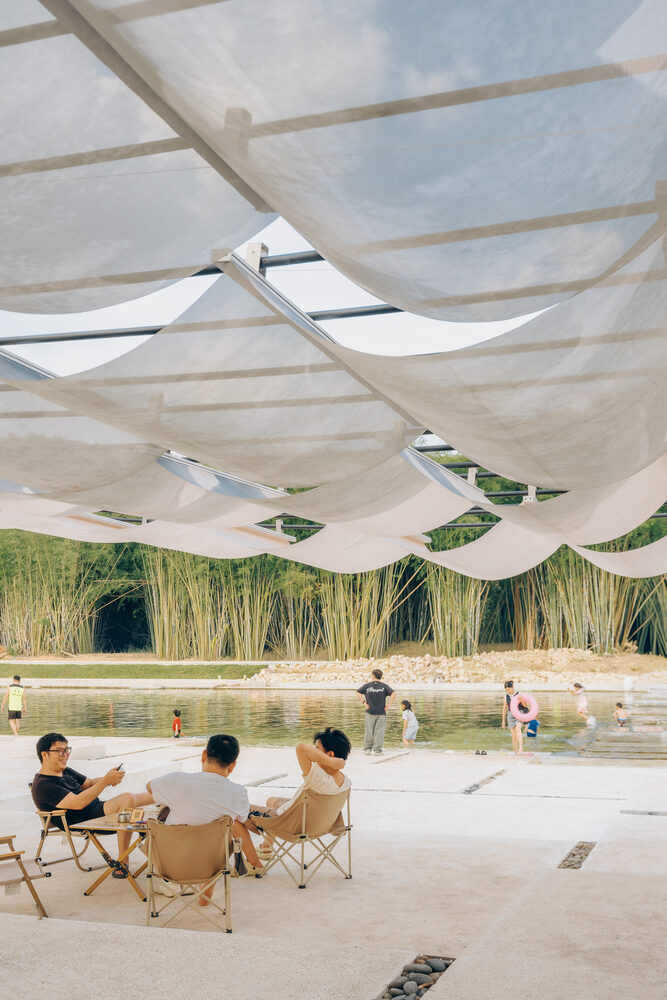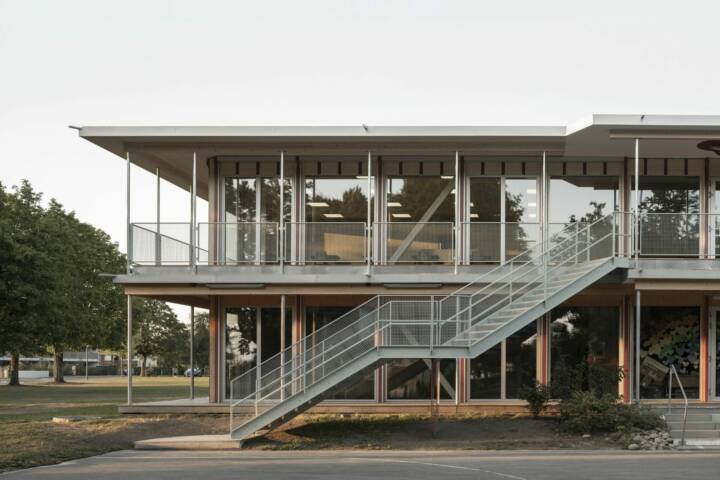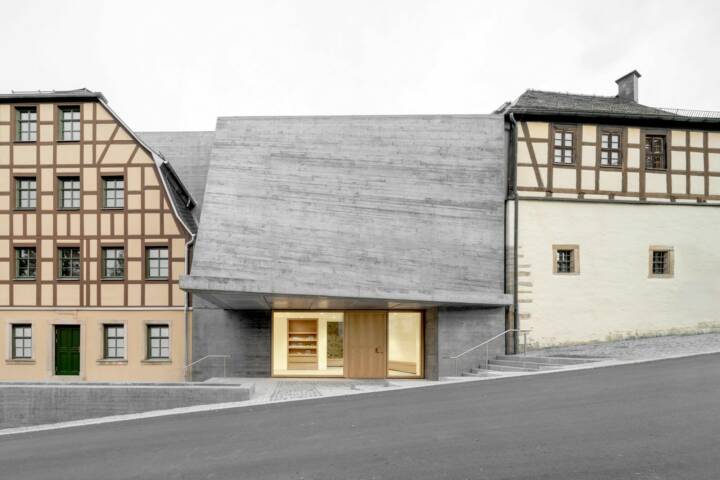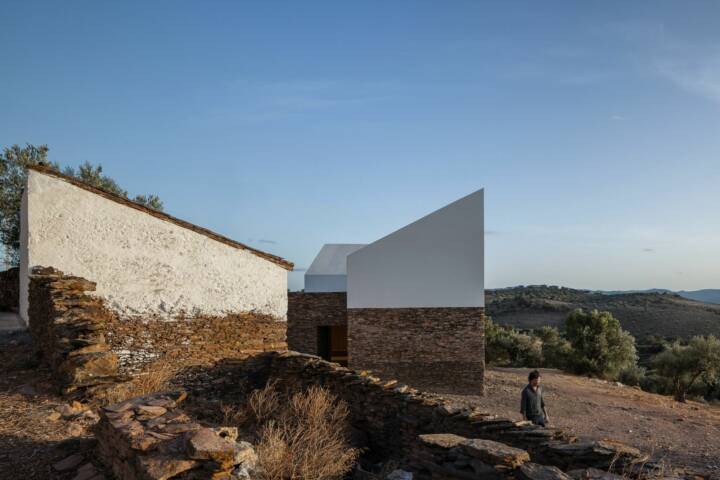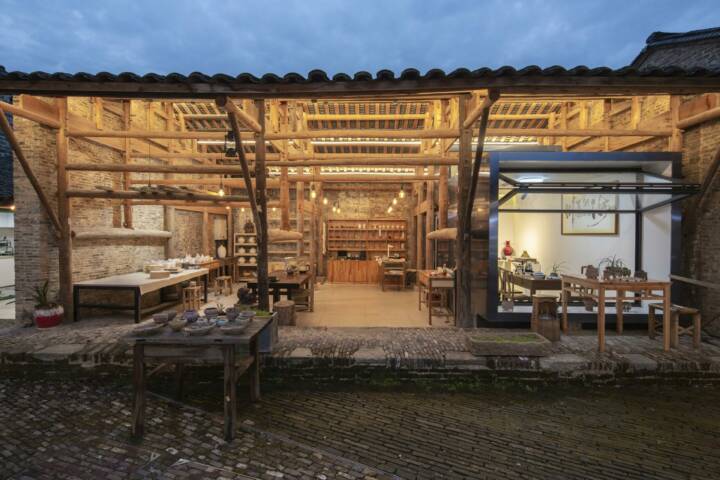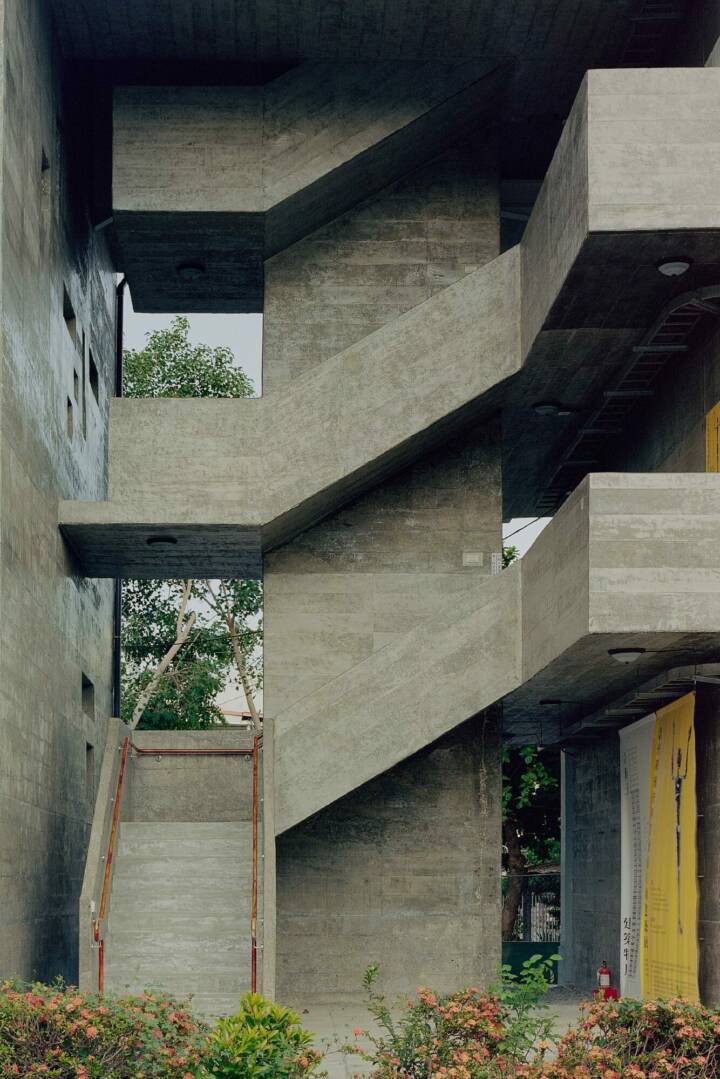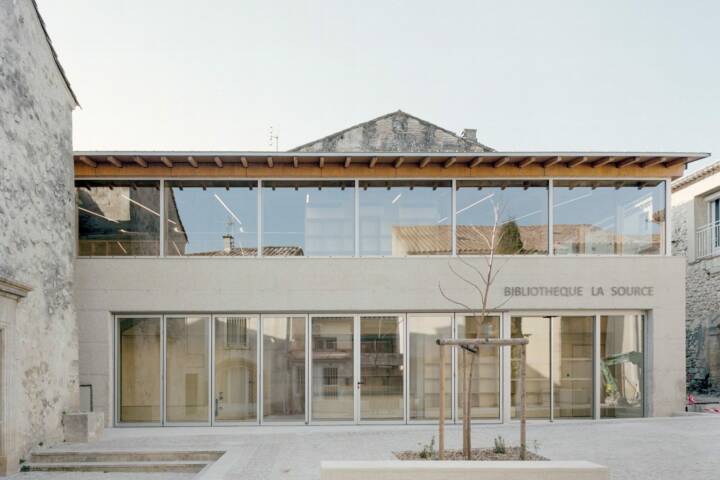Architects: Alejandro Maortua Verne Arquitectura Photography: Pablo García Esparza Construction Period: 2024 Location: Bilbao, Spain
The project consists in the design of a Basque Pelota court and a set of spaces for different uses in Aguilar de Codés, a small town in Navarre with medieval origins, located at the foot of the Sierra de Codés mountain.
In particular, the Town Council required that the court space could simultaneously serve as a space to hold local festivities or meals. It also demanded the creation of a small public square with a construction similar to the usual “kioskos”, where the small bands of the area play or perform. And, in addition, it demanded that the previous spaces be complemented with a warehouse and changing rooms.
For this purpose, the City Council provided a site located in the center of the town, which has a steep slope on the north-south axis. To the north, this site borders the Calle Mayor and the traditional buildings on it, while to the south it borders the Calle La Solana, on which there are no nearby buildings. The site has beautiful views of the landscape on its southern side. Moreover, on this site there was an old noble house, already in a state of ruin, which the new construction had to replace. It was also demanded by the Town Hall that the new building should remind or resemble the old house, as well as house the coat of arms of the old house.
In addition to the starting conditions (the program, the location of the site and the aforementioned resemblance to the old house), the design of the building was always approached under a fundamental premise: the building had to be integrated into its surroundings without damaging the image of the town itself. Normally, Basque Pelota Courts located in rural areas are buildings that, due to their scale and the techniques used for their construction, clearly clash with their surroundings.
To achieve these objectives, the project is deployed from two very clear lines of action: the volume of the set, worked essentially from the section; and the choice of materials and construction systems used to shape it.
Thus, the project aims to be configured from a unitary volume with different bodies linked together. The court piece is located on the north side. The base piece that constitutes the public square extends to the south. And a small body for the “kiosk” and the changing rooms is connected laterally to the two previous ones, acting as a lateral limit of the square and allowing to produce, by its back side, a road access to the fronton and the entrance to the changing rooms.
Read MoreCloseTo form the complex, the steep slope of the site is taken advantage of: part of the court space is buried on the north side and, at the same time, the public square is configured as a nice viewpoint to the south. The difference in height between the two spaces is used to place the stands, while the access to the complex is at the midpoint of the same, where the height of the street almost coincides with the level of the square. Thanks precisely to this semi-buried arrangement of the court space, the volume of the building significantly reduces its scale towards the Main Street and has a height very similar to that of the pre-existing mansion.
The materiality used in the design significantly reinforces the integration of the complex into its surrounding context. It should be noted, first, that throughout the volume there is an intended difference between the structural materials and the materials that make up the finish. Thus, all the structural walls of the complex, and particularly those that make up the court, are built with huge prefabricated concrete pieces. These are exposed towards the interior of the space and, however, are clad with ashlars of floresta sandstone towards the exterior.
The presence of the stone seeks to establish a certain homogeneity with the local buildings and even with the remains of medieval towers and walls present in various parts of Aguilar de Codés. However, the wall is composed in a more abstract and, if possible, contemporary way: the pieces are 8 cm thick and are arranged in different sizes horizontally, from a very studied quartering. A strong vertical grating is applied to all the stones, producing an intense rough and vibrant texture.
The structure of the roof and the south façade of the gable are proposed in a different way: in this case, laminated wood is the material used. In particular, the south face of the court is built with a very powerful wooden truss that only supports at its ends and at the point where the perpendicular volume of the “kiosk” and changing rooms reaches the plane of the facade. In this way, the continuity and connection between the level of the gable and the area of the square is enhanced, since there are no supporting elements that hinder traffic or views. In addition, the point where the truss rests -coinciding with the start of the perpendicular volume- is celebrated by generating a small balcony, designed so that people with reduced mobility can access on level ground from the square.
In this facade, however, the material covering the structure is much lighter and also seeks to filter the sun’s rays without interrupting the entry of light: large frames hanging from the wooden truss containing vertical “Z” slats, all made of Corten steel. The façade of the perpendicular volume that overlooks the square is also made of these metal parts. In this case, they can also be opened so that the interior space can be used as a small stage on festival days. Corten steel is a material that, although only visible from the square and the south side, not so much from the heart of the town, combines perfectly with the stone. Moreover, most of the finishes and functional elements, such as gutters, guttering, copings, or gargoyles, are also made of this material.
The facades of the court volume finished in stone -the façade on Main Street and the access façade- are composed taking as inspiration the elevations of the old building that used to stand on the site. Thus, a series of openings are made that, to a large extent, share the position and proportion that the windows of the house used to have. However, they are false openings: the prefabricated concrete of the structure appears at the bottom of the opening.
The openings thus testify from the north face that the building is a Basque Pelota court, and even reveal the thickness of the stone and the fact that it is, in fact, a cladding. Only one hole is, so to speak, real: the one that coincides with the position of the old door of the house. Now this gap is a window that allows, from the street, to observe the activity that takes place inside, and further down, in the gable.
In short, the result of all these operations explained above is a very pleasant, quiet, and practical interior playing space. The underground level of the court gives a certain sense of protection and intimacy, while the wood on the roof and on the side facade provides a great warmth to the space and fantastic acoustics for the game. In addition, the continuity with the square, the presence of a small tree in it, and, above all, the panoramic view of the landscape, complete the pleasant interior sensation that this new building offers to the inhabitants of Aguilar de Codés.
Text provided by the architect.
